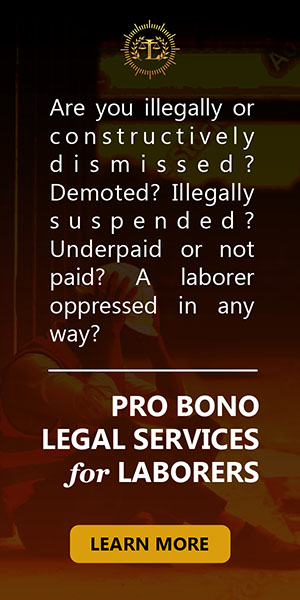INVOLUNTARY INSOLVENCY
Act No. 1956
NATURE OF INVOLUNTARY INSOLVENCY PROCEEDINGS
> An involuntary insolvency isn’t a mere personal action against the insolvent for the collection of debts; but its purpose is to impound all of his non-exempt property, to distribute it equitably among his creditors and to release him from further liability
> It is an action in rem and action in personam
WHO MAY PETITION FOR INVOLUNTARY INSOLVENCY
1. They have the qualifications required by the Insolvency Law
2. Their credits must be those contemplated by the Insolvency Law
STEPS IN INVOLUNTARY INSOLVENCY
1. Filing of the petition by three or more creditors
2. Issuance of order requiring the debtor to show cause why he shouldn’t be adjudged insolvent
3. Service of order to show cause
4. Filing of answer or motion to dismiss
5. Hearing of the case
6. Issuance of order or decision adjudging debtor insolvent
7. Publication and service of order
8. Meeting of creditors for election of an assignee in insolvency
9. Conveyance of debtor’s property by clerk of court
10. Liquidation of assets and payments of debts
11. Composition, if agreed upon
12. Discharge of the debtor on his application, except a corporation
13. Objection if any to the discharge
14. Appeal to the SC in certain cases
WHY IS THERE NO NEED TO ATTACH SCHEDULE AND WHY IS THERE A NEED FOR VERIFICATION?
> Answer behind this isn’t legal
> It is not required because the creditors are not in the position in the first place to know
WHO WILL ULTIMATELY SUBMIT THE SCHEDULE OF ASSETS AND LIABILITIES?
The debtor. In case of his absence, the assignee may be required to submit as far as practicable.
IS THERE ANYTHING CREDITOR CAN DO IN THE MEANTIME? DEBTOR CAN HAVE POSSESSION OF PROPERTY BETWEEN STEPS 1 AND 2.
> The creditor may ask for the appointment of a receiver during steps 1 and 2 as provisional remedy to prevent the leak of assets
WHAT IS THE RECOURSE OF THE DEBTOR WHEN THE CREDITOR FILED FOR INSOLVENCY FOR THE SOLE PURPOSE OF HARASSMENT?
> File for damages and if you are thinking criminal, file for perjury.
> Recover from the bond posted by the creditors
REQUISITES OF PETITION FOR INVOLUNTARY INSOLVENCY THE PETITION IS TO BE FILED BY
1. Three or more creditors
2. None of whom has become such a creditor by assignment, within 30 days prior to the filing of petition
3. Whose credits accrued in the Philippines
4. The total amount of which credits is not less than P1000
5. In the RTC of the province or city in which the debtor resides or has his principal place of business
THE PETITION--
6. Must be verified by at least three of the petitioning creditors
7. Must set forth one or more acts of insolvency mentioned in the law
8. Must be accompanied by a bond, approved by the court with at least two sureties, in such penal sum as the court shall direct
ACTS OF INSOLVENCY
1. Intention to depart or departure from the Philippines to defraud creditors
2. Absence from the Philippines to defraud creditors
3. Concealment of debtor to avoid legal process
4. Concealment or removal of his property to avoid legal process
5. Confession of judgment in favor of any creditor to defraud other creditors
6. Allowing default judgment in favor of a creditor to defraud other creditors
7. Allowing his property to be taken under legal process in preference of a particular creditor to defraud other creditors
8. Making conveyance, assignment or transfer of his property to defraud creditors
9. Making conveyance, assignment or transfer of his property in contemplation of insolvency
10. Default of a merchant or tradesman to pay his current obligations for a period of 30 days
11. Failure to pay money on deposit or received in a fiduciary capacity for a period of 30 days after demand
12. Insufficiency of property to satisfy an execution issued against him
ADJUDICATION OF INSOLVENCY
> If the respondent debtor shall make a default, or if, after trial, the issues are found in favor of the petitioning creditors, the court shall make an order adjudging the said respondent is and was, at the time of filing of the petition, an insolvent debtor and that the debtor was guilty of the act and things charged in the petition or such of them as the court may find to be true
> The date of adjudication of insolvency retroacts to the date of the filing of the petition for insolvenc



 Spotify
Spotify  iTunes
iTunes  AppleMusic
AppleMusic  YouTube
YouTube 


